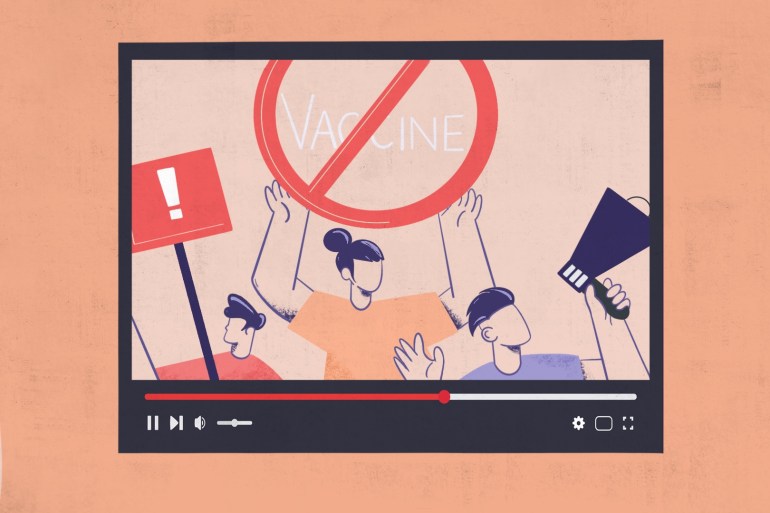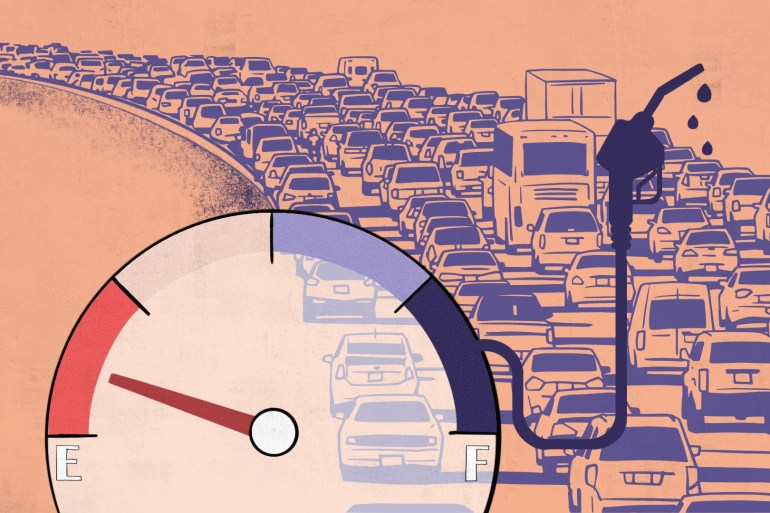Cloth vs N95: Which coronavirus mask should you wear?
Dr Khan explains how to find the best mask for you and examines the evidence on whether we should still be wiping down home deliveries and shopping.

Mask wearing has been a hotly debated topic, but most scientists agree that face coverings do help reduce the spread of the coronavirus, though the degree to which they do so depends on the quality of the masks themselves.
Because about one in three people who have COVID-19 display no symptoms at all, widespread use of masks remains important. A study which reviewed the evidence on mask wearing found in favour of widespread mask use by infected people as a way to help reduce community transmission, concluding that the available evidence suggests that near-universal adoption of any face covering at all, in combination with complementary public health measures, could successfully reduce the community spread of COVID. Models suggest that public mask wearing is most effective at reducing the spread of the virus when compliance is high.
Keep reading
list of 4 itemsMexico’s teachers seek relief from pandemic-era spike in school robberies
‘A bad chapter’: Tracing the origins of Ecuador’s rise in gang violence
Why is the US economy so resilient?
At the start of the pandemic, there was a worldwide shortage of personal protective equipment (PPE) and governments advised the general public not to buy N95 or FFP2 masks so that they would remain available for front-line staff. N95 respirators, named for their ability to filter 95 percent or more of tiny 0.3-micrometre (μm) particles, are the mainstay of protection against airborne bacteria and viruses. The European equivalent FFP2 mask, which filters about 94 percent of aerosol particles, is also very effective.
When this advice was being given out, there was little understanding or agreement that SARS-CoV-2, the virus that causes COVID-19, was airborne; much of the focus was on droplet spread. The advice for the public was that cloth masks were appropriate in helping reduce the spread of large droplets.
But now, with the knowledge that the virus is mainly transmitted through tiny aerosol particles that can linger in the air for hours, is it time for governments and health authorities to update their advice? The short answer is: “Yes.” If you are able to access N95 or FFP2 masks, you should wear one, but any face covering at all is better than none.
It is vital that the best fitting and most effective masks are saved for those working on the front line, but now that there is no longer a shortage of such masks, the evidence for wearing properly fitted N95 masks in any indoor space where large crowds are likely to gather or where there is poor ventilation becomes more compelling.
Any face covering is better than none at all, but if you are able to get medical grade masks and wear them properly, then these are the right ones for you.
With the highly transmissible Delta variant, the need for effective masks in public settings is more urgent. The vaccines certainly do help reduce transmission and serious illness from the virus, but combined with other preventive measures, we can significantly reduce the spread of this virus further. Effective masks play a part in this, and it is worth investing in N95/FFP2 masks to replace your usual cloth or surgical mask. However, if you cannot get your hands on an N95/FFP2 mask then a cloth or surgical mask is better than no mask at all in preventing the spread of COVID.
When thinking of buying an N95/FFP2 mask, how well the mask fits is imperative. There is no point having a mask with a highly effective filter that does not fit around your face, allowing air and aerosol particles to move freely around the edges. It is also important that it is comfortable so it can be worn for long periods of time without causing irritation. There are videos available online for those who have bought these masks showing how to fit them correctly. People do worry about reusing N95 masks but we now know that the virus is less likely to survive on surfaces such as the front of a mask, so it is most likely safe to reuse them a few times.
Buying N95/FFP2 masks is not as easy as it sounds, with many counterfeit versions available and very little regulation. There is also no official guidance on exactly what N95/FFP2 mask to buy and where to buy it from, so it is difficult to distinguish between legitimate and counterfeit products.
It can be confusing knowing exactly which mask is best. The N95 and FFP2 high filtration masks outperform cloth and surgical masks both in studies and real-world settings when it comes to reducing the spread of aerosol particles – both for the wearer and for those around them.
Any face covering is better than none at all, but if you are able to get medical grade masks and wear them properly, then these are the right ones for you. If you opt for a cloth or surgical face mask, then ensure it has at least three layers for maximum protection.
Progress report: Should I wash my shopping? – Rethinking how COVID is spread
When the pandemic began, we were flooded with a deluge of advice on how to reduce the risk of getting the coronavirus. Much of this advice was based around the initial theory that it was mainly spread through droplets – referring to larger, heavier globules of fluid that infected people cough, sneeze or breathe out and that tend to drop out of the air onto surfaces within a distance of 1 to 2 metres. This theory influenced advice around social distancing, mask wearing and hand washing.
While droplets certainly can and do carry the virus, it has become evident that the main route for the spread of COVID is via smaller, lighter aerosol particles that infected people cough, sneeze and breathe out but which linger in the air, getting breathed in by new uninfected human hosts.

So, does that mean the previous advice is now obsolete? The short answer is: “No.”
Other routes of transmission still have a part to play in the spread of the coronavirus, even if they are more like supporting actors in a play where airborne transmission is the star. Where cases are high, and certainly in indoor spaces, social distancing – or staying 1-2 metres (3.3-6.6 feet) apart from people who are not in your bubble – remains important as droplet spread is still possible.
At the start of the pandemic, there was a strong push for mask wearing, hand washing (who can forget singing “happy birthday” twice while washing their hands?), and buying cleaning products to keep surfaces – and in some cases, groceries – wiped down and sterile.
The spread of a disease via contaminated inanimate objects, such as kitchen surfaces or boxes delivered to our doors, is known as fomite spread. The theory in terms of the coronavirus is that droplets produced through coughs and sneezes containing the virus land on surfaces and get transferred onto the hands of people who touch them; these same people go on to touch their faces and potentially spread the virus. But is this advice about fomite spread still accurate today?
There is increasing evidence that in the real world fomite transmission is not a common route through which the virus is spread. Much of the advice that was given about keeping surfaces clean was based on studies done under strict control in laboratories that bear little resemblance to real-life scenarios. One study showed that the longest time severe acute respiratory syndrome coronavirus (SARS-CoV) survived on surfaces was six days, but this was done by placing a very large initial virus sample on the surface being tested.
Other studies conducted in controlled labs showed survival rates of the coronavirus to be between two and four days, but all of these had relatively large samples dumped onto innate surfaces. None of these studies presents scenarios akin to real-life situations. Two studies seeking to determine whether fomite spread was a factor in spreading disease were conducted in hospitals in northern Italy where only standard cleaning procedures were carried out. Both studies took place on wards where patients who tested positive for COVID-19 were being cared for. Several objects and surfaces were swabbed, and – with the exception of some of the breathing equipment used by COVID-positive patients – no virus was cultured from them.
The virus appears unlikely to last long enough on innate surfaces for this to be a contributing factor to the spread of COVID.
Adding to the growing evidence that fomite transmission plays a relatively small role, if any, in the spread of the virus, a large study looking at the role of fomite spread in Brazil collected samples from mask fronts, mobile phones, paper money, card machines, sewage, air and bedding during the ascendant phase of the epidemiological curve of COVID-19 in Barreiras city, and did not detect any trace of SARS-CoV-2 in any of the samples analysed. The study concluded that, so far, the environment and inanimate materials had not played an important role in COVID transmission in the area.
The virus appears unlikely to last long enough on innate surfaces for this to be a contributing factor to the spread of COVID. That being said, good hygiene is never a bad idea and keeping hands and surfaces clean may help slow the spread of other diseases that rely more on fomite transmission. But it may be time to stop wiping down your home deliveries and shopping.
With regards to the coronavirus, the focus must be on airborne transmission, particularly in indoor areas. Schools, offices, shopping centres and hospitals must ensure the safety of the people they accommodate by looking at ways to filter air adequately and keep ventilation flowing so any airborne viral particles are taken out of the atmosphere. Until governments and regulatory bodies take airborne transmission seriously, we are likely to see continued infections and reinfections of COVID-19.
Good news: YouTube cracks down on anti-vaccine videos
As a doctor who often appears on UK television advocating for COVID-19 vaccines, I am no stranger to online abuse from people who disagree with me. I have even experienced verbal abuse in the street and had threatening letters sent to my surgery. On sharing my experiences with other UK media medics, I was not all that surprised to learn they had similar things happen to them – one very prominent doctor had a mob of anti-vaxxers show up at their home and threaten not only them, but their family and neighbours also. It was a very frightening experience for this person.
Most people who strongly believe that vaccines do harm rather than good are usually victims of misinformation, and there is no shortage of misinformation in the public domain. Social media companies claim to be doing all they can to crack down on information about the vaccines that is not based on evidence – of course, the anti-vaxxers claim this is all part of a wider plan to control the narrative, but it is not.

Any vaccine information should be sought from reputable websites and sources, and these should only be based on robust clinical studies. None of us is saying vaccines do not cause any side effects as all medicines do. But all the scientific data shows the benefits of the vaccines for approved groups of people outweigh any potential harms, by a long way.
So, when I heard YouTube say it was going to remove all vaccine misinformation and close the accounts of several prominent anti-vaccine influencers, I was relieved. Perhaps this will mean less abuse of front-line staff.
But how effectively this ban will be implemented remains to be seen. Facebook had similarly announced that it would crack down on false information about COVID-19 and the vaccines, but the results have been mixed. I am still bombarded with links to Facebook accounts claiming vaccines cause all sorts of nonsensical side effects.
While I welcome any efforts social media firms take to tackle anti-vaccine misinformation, I wish they had done this months ago. Misinformation has been allowed to flourish and spread on a scale never seen before and my worry is that the damage may already have been done. After all, it is hard to put the genie back in the lamp, and the large-scale anti-vaccine protests we have seen are proof of that. But as the old saying goes, it is better late than never.
Personal account: Britain’s fuel crisis
On September 26, some news outlets started reporting problems in the delivery of fuel at a small number of petrol stations in the UK. The message coming through was that Britain had enough fuel but not enough drivers of heavy goods vehicles (HGVs) to take the fuel from storage to petrol stations; as a result, some petrol stations were having to temporarily close. Do not panic, they said – there is plenty of fuel.
Well, of course, the “do not panic” message only encouraged UK citizens to flock to petrol stations up and down the country to fill up cars, jerry cans and any other containers they could carry, leading to a countrywide crisis. Now, I will try not to get too political about the reasons why we ran out of fuel on the forecourts, but suffice to say it was multifactorial – from poor working conditions and pay for HGV drivers, to Brexit and government inaction in helping counter the pending crisis.
When I went in search of fuel for my car, every petrol station I visited was empty. This meant there were two days where I could not drive myself to work at the surgery but instead had to get a taxi. Not the biggest problem in the world perhaps, but certainly one that could have been avoided. It also meant when I went on home visits to see sick, housebound patients I had to get a taxi to wait outside until I had finished and then take me to see my next patient. Not an ideal situation when you are pressed for time and have a clinic to get back to.

And I am not the only front-line worker to have been caught out by the fuel crisis. I heard first-hand reports of community nurses who were unable to get to their housebound patients due to the lack of fuel. For them it is not as easy as booking a taxi; they need to carry large amounts of equipment with them in order to nurse their patients – equipment that includes vital drugs, wound dressings as well as complex drug administering machines, so lugging these in and out of a taxi is unfeasible. Social care workers were also struggling, some having to wait for hours in queues for fuel and consequently being late for work and for the people they care for.
Reader’s question: How many people have been vaccinated globally?
We all know this is a global pandemic. Part of tackling it is having a global response, and vaccines are a massive part of this. By vaccinating people, not only are we reducing their risk of becoming seriously sick with the virus, but we are also protecting global healthcare systems and economies.
As of October 5, 2021, 6.36 billion doses of the COVID-19 vaccines have been given out globally. That means 45.8 percent of the world population has received at least one dose of a COVID vaccine. The United Arab Emirates and Portugal are the two countries with the highest vaccination rates, both countries having started early with vaccinating adults and younger age groups.
It is an incredible feat; to bring this pandemic to an end, a large share of the world needs to be immune to the virus and we are making good progress. Humans have long relied on the global use of vaccines to eradicate deadly diseases and COVID is no different.
The vaccines are relatively safe and highly effective. The challenge is to make vaccines available to the poorest and hardest to reach communities. But through global and charitable efforts, this is possible.